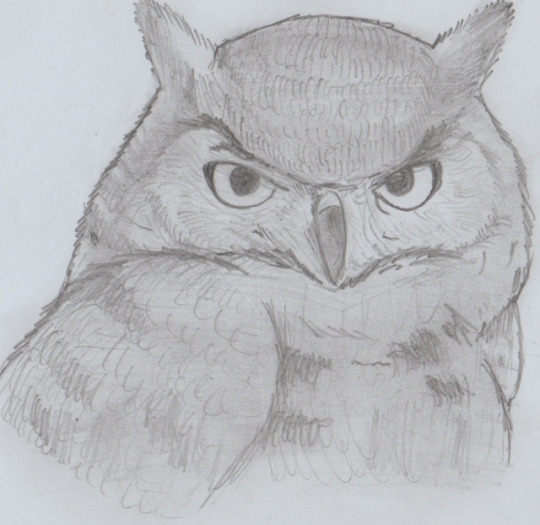#bubo magellanicus
Explore tagged Tumblr posts
Photo

A new variant has been added!
Lesser Horned Owl (Bubo magellanicus) © Hugo Hulsberg
It hatches from brown, dark, dense, distinctive, haunting, hooting, large, overall, widespread, and wooded eggs.
squawkoverflow - the ultimate bird collecting game 🥚 hatch ❤️ collect 🤝 connect
12 notes
·
View notes
Text
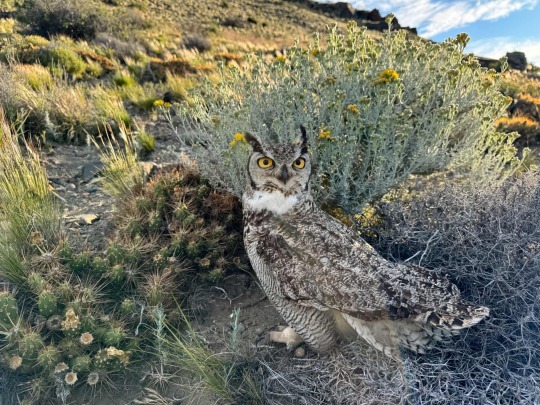
A lesser horned owl in the meadows of the Patagonian valley in Santa Cruz, Argentina. These owls are found in southern South America and have distinctive ear-tufts, a black-rimmed face and a heavily striped abdomen - Photograph: Anadolu/Getty Images
Click source for more Week in Wildlife photos (03/01/25)
#argentina#lesser horned owl#ord: strigiformes#fam: strigidae#Bubo magellanicus#wildlife photography
1 note
·
View note
Note
Happy Chaos from Guilty Gear Strive
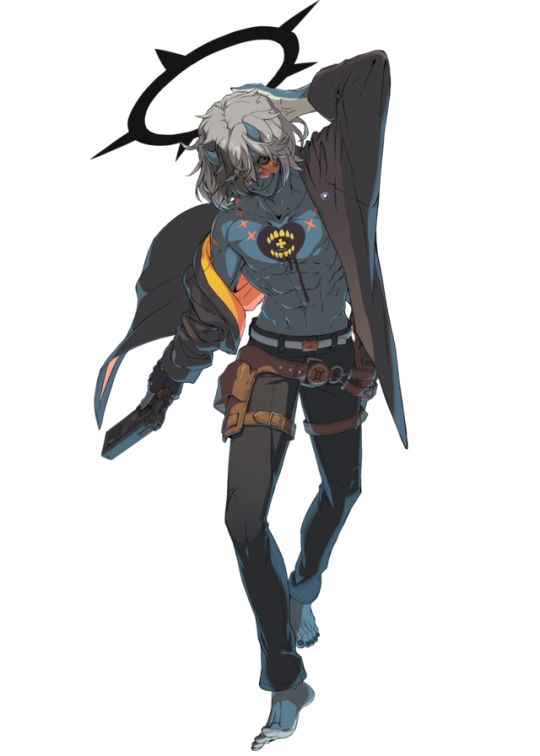
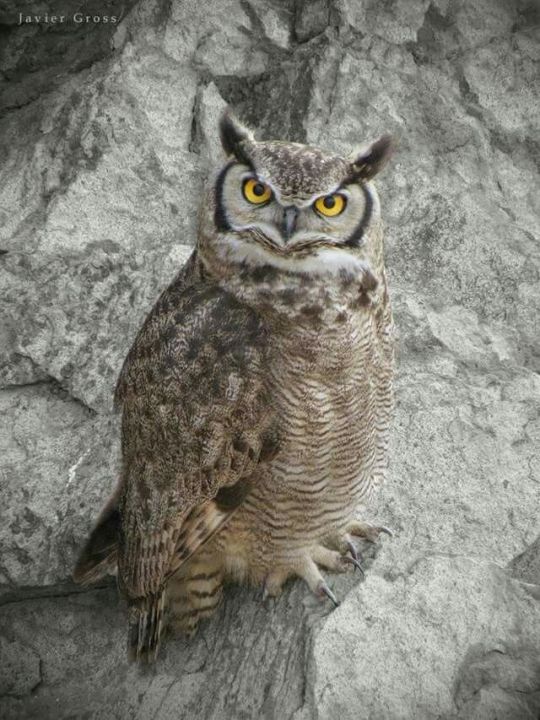
Happy Chaos from the video game Guilty Gear Strive is a Lesser Horned Owl (Bubo magellanicus).
15 notes
·
View notes
Note
hi there! ummm idk if you like asks or not-- but i was wondering if you have a favorite/some favorite birds? 👀
i hope you're having a great day/night! 💙
Sorry for the delay, I have no problem answering questions. The answer will be a bit long, sorry xD I'm a big fan of almost all birds (the Californian condor is a bit difficult for me 😅), but if I had to choose a few I guess they would go like:
Chicken: I have a pet rooster, so there is a conflict of interest xD Roosters have a reputation for being more violent and not as affectionate than hens, and they are somewhat right xD but we managed to have three roosters living together in relative peace (two of them were brothers), and they could be like a dog that gets on the couch or wants to steal food when they want to xD Two of them have already passed away, but the remaining one has a switch between surly and silent affection

Mention to the Zenaida meloda who came to visit
2. Hummingbird: Hummingbirds in general, I like a lot of different species. I have a photo I was able to take of a baby Rhodopis vesper at my house.

3. Tachuris rubrigastra: I didn't know how high to place it in this kind of "top", but this bird was a national phenomenon so it couldn't be any other way. It became famous in 2023 when the Pan American and Parapan American games made it their official mascot under the name Fiu. I remember that at first I wasn't convinced because the character design and costume made it look too round without the shape of a real bird (the snob who says he knew it before it became famous xD), but it was a bird, I fell for it pretty quickly, I even got a pin of it xD.


Honorable mentions
Pitangus sulphuratus: A bird from tropical areas, when it sings it seems to say bem te vi xD. I am fond of it because I have seen it when visiting relatives.
Troglodytes aedon: A small, round bird that makes alarm noises.
Turdus falcklandii: He is my neighbor, very nice.
Rupicola peruvianus: It is a small rooster with a good hairstyle, nothing more to add
Pharomachrus mocinno: I have never seen one in person, but Guatemala has its own currency in its honor.
Daptrius chimango: The South American crow was found to be as intelligent as a raven
Owls and barn owls: Examples: Bubo magellanicus, Glaucidium nana, Athene cunicularia, Strix rufipes, Tyto alba
I hope it hasn't been too long xD I'd like to know what your favorite birds are, best regards :D
2 notes
·
View notes
Photo

Vintage Mid Century 1960s 60s Wood Wooden Embossed OWL Wall Hanging Plaque
Vintage
Lovely condition
Believe its a Horned Owl
Newer, replacement, wire and nails on the backside for easy hanging.
Very thin / 2 dimensional (its less than a quarter inch thick)
I package well and ship out daily!
Horned owl
62 languages
Article
Talk
Read
Edit
View history
Tools
From Wikipedia, the free encyclopedia
"Eagle owl" redirects here. For other uses, see Eagle owl (disambiguation).
Horned owls and eagle-owls
Temporal range: Late Pliocene to present
Indian eagle-owl, Bubo bengalensisScientific classificationDomain:EukaryotaKingdom:AnimaliaPhylum:ChordataClass:AvesOrder:StrigiformesFamily:StrigidaeGenus:Bubo Duméril, 1805Type speciesStrix bubo
Linnaeus, 1758
Species
See text
Synonyms
Huhua
Nyctea Stephens, 1826
Ophthalmomegas Dejaut, 1911[1]
and see text
The American (North and South America) horned owls and the Old World eagle-owls make up the genus Bubo, at least as traditionally described. The genus name Bubo is Latin for owl.
This genus contains ten species that are found in many parts of the world. Some of the largest living Strigiformes are in Bubo. Traditionally, only owls with ear-tufts were included in this genus, but that is no longer the case.
Eurasian eagle-owl with a rat in its beak
Taxonomy[edit]
Detail of an eye of an eagle-owl
The genus Bubo was introduced in 1805 by the French zoologist André Duméril for the horned owls.[2] The type species is the Eurasian eagle-owl.[3] The word bubo is Latin for the Eurasian eagle owl and was used as the specific epithet for the species by Carl Linnaeus in 1758.[4]
A molecular phylogenetic study published in 2020 found that species in the genera Scotopelia and Ketupa were embedded within the clade containing members of the genus Bubo making the genus Bubo paraphyletic. To create monophyletic genera nine species were moved from Bubo to Ketupa.[5][6]
Species[edit]
The genus contains 10 extant species:[6]
Snowy owl, Bubo scandiacus
Great horned owl, Bubo virginianus
Lesser horned owl, Bubo magellanicus
Eurasian eagle-owl, Bubo bubo
Indian eagle-owl, Bubo bengalensis
Pharaoh eagle-owl, Bubo ascalaphus
Cape eagle-owl, Bubo capensis
Arabian eagle-owl, Bubo milesi
Greyish eagle-owl, Bubo cinerascens
Spotted eagle-owl, Bubo africanus
Eurasian eagle-owl (Bubo bubo)
Sometimes included in this genus:
Verreaux's Eagle-owl, Ketupa lactea
Spot-bellied Eagle-owl, Ketupa nipalensis
Barred Eagle-owl,Ketupa sumatrana
Fraser's Eagle-owl,Ketupa poensis
Akun eagle-owl, Ketupa leucosticta
Philippine eagle-owl, Ketupa philippensis
Dusky eagle-owl, Ketupa coromanda
Shelley's eagle-owl, Ketupa shelleyi
Blakiston's fish owl, Ketupa blakistoni
Brown fish owl, Ketupa zeylonensis
Tawny fish owl, Ketupa flavipes
Buffy fish owl, Ketupa ketupu
Pel's fishing owl, Scotopelia peli
Rufous fishing owl, Scotopelia ussheri
Vermiculated fishing owl, Scotopelia bouvieri
Fossil record[edit]
Named and distinct Bubo species are:
Bubo florianae (Late Miocene[verification needed] of Csákvár, Hungary, tentatively placed here)
Bubo leakeyae (Early Pleistocene of Tanzania)
Bubo binagadensis (Late Pleistocene of Binagady, Azerbaijan)
Bubo osvaldoi (Pleistocene of Cuba)[7]
Bubo insularis (Pleistocene of Sardinia)
Some notable undescribed fossils of prehistoric horned owls, usually quite fragmentary remains, have also been recorded:
Bubo sp. (Late Pliocene of Senèze, France)[8]
Bubo sp. (Late Pliocene of Rębielice Królewskie, Poland; tentatively placed here)[9]
Bubo sp. (Late Pleistocene of San Josecito Cavern, Mexico)[10]
Specimen UMMP V31030, a Late Pliocene coracoid from the Rexroad Formation of Kansas (US), cannot be conclusively assigned to either Bubo or Strix. This fossil is from a taxon similar in size to the great horned owl (B. virginianus) or the great grey owl (S. nebulosa).[11]
The Sinclair owl (Bubo sinclairi) from Late Pleistocene California may have been a paleosubspecies of the great horned owl,[12] while the roughly contemporary Bubo insularis of the central and eastern Mediterranean has been considered a junior synonym of a brown fish owl paleosubspecies.[13] Additional paleosubspecies are discussed on the appropriate species page.
Several presumed Bubo fossils have turned out to be from different birds. The Late Eocene/Early Oligocene eared owls "Bubo" incertus and "Bubo" arvernensis are now placed in the fossil barn-owl genera Nocturnavis and Necrobyas, respectively. "Bubo" leptosteus is now recognized as primitive owl in the genus Minerva (formerly Protostrix). "Bubo" poirreiri from the Late Oligocene or Early Miocene of Saint-Gérard-le-Puy in France, is now placed in Mioglaux.
On the other hand, the supposed fossil heron "Ardea" lignitum from the Late Pliocene of Plaue-Rippersroda (Germany) was apparently an owl and close to Bubo or more probably actually belongs here. Given its age – about 2 million years ago or so – it is usually included in the Eurasian eagle-owl today.[14]
Interactions with humans[edit]
Because of their nocturnal habits, most owls do not directly interact with humans. However, in 2015, an eagle owl in Purmerend, Netherlands, attacked some fifty people before it was caught by a hired falconer.[15]
0 notes
Photo
Tucúquere (Bubo magellanicus) ♡
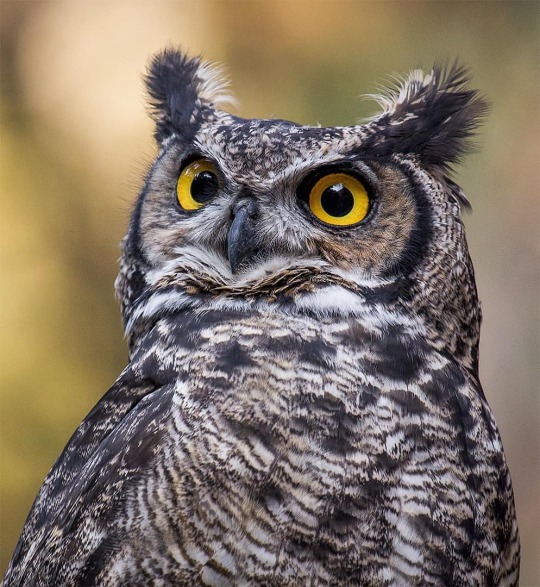
Los ojos del buho
Repost @jm.wildlife … Para mi gusto, los ojos más lindos de Santiago los tiene este búho… El más grande de Chile. La foto la saqué hace un tiempo en el Santuario de la naturaleza del arrayán.
¿Alguien sabe como se llama esta especie?
#AvesDeChile #Wildlife #Outdoor #Photography #Landscapes #Paisajes #Animals #Animales #Naturaleza #Nature #YourShotPhotographer #EarthFocus #Earthpix #SantuarioDeLaNaturaleza #Buho (en Santiago, Chile) https://www.instagram.com/p/CHMEZaOBiCm/?igshid=2wfvz224c0ep
12 notes
·
View notes
Video
youtube
Asi es nuestro Búho Túcuquere (Bubo magellanicus) Todos los búhos poseen audición extremadamente sensible, lo que les permite escuchar sonidos de bajo volumen que están relativamente lejos. Pero más allá de eso, muchos búhos también tienen una extraña habilidad para concentrarse en la ubicación exacta de una fuente de sonido. Los búhos con esta habilidad especial tienen un rasgo anatómico inusual como lo son sus oidos asimétricos, donde un oido es más alto que el otro, y un oído también está más adelante en la cabeza que el otro. Este arreglo inusual ayuda a los búhos a localizar la fuente de los sonidos en el espacio tridimensional con gran precisión. Las pequeñas diferencias en el tiempo que tardan los sonidos en llegar a cada oído permiten que el búho se centre casi instantáneamente en la ubicación precisa del sonido.
El búho puede determinar no sólo la dirección de un sonido, sino también su altura (es decir, en el suelo o en un árbol) y la distancia. Es así como los convierten en extraordinarios cazadores nocturnos.
También hay que mencionar que han desarrollado un plumaje especializado para eliminar eficazmente el ruido aerodinámico de las alas durante el vuelo , capturando a sus presas en completo silencio.
2 notes
·
View notes
Photo
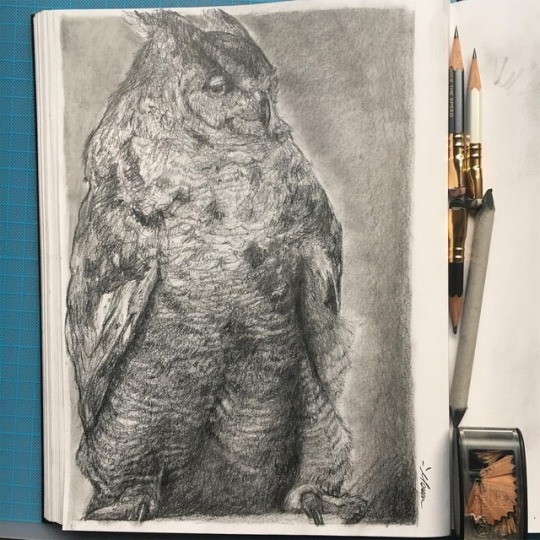
Tucúquere or Magellanic Horned Owl (Bubo magellanicus) in pencil Thanks to @cromarti.cl for the awesome #palomino pencil sharpener, it was used a lot :) #bubomagellanicus #palominoblackwing #art #losrios #drawing #dibujo #lapiz #grafito #art #design #arte #ilustracion #illustration #naturalism #nature #owl #buho #tucuquere #magellanichornedowl #nofilter (en Corral, Chile) https://www.instagram.com/p/BvtkAIQDDtP/?utm_source=ig_tumblr_share&igshid=12i9m7hp223rw
#palomino#bubomagellanicus#palominoblackwing#art#losrios#drawing#dibujo#lapiz#grafito#design#arte#ilustracion#illustration#naturalism#nature#owl#buho#tucuquere#magellanichornedowl#nofilter
1 note
·
View note
Photo
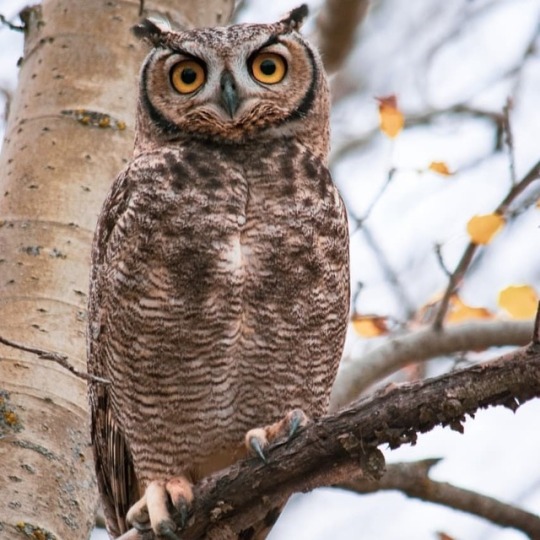
TUCÚQUERE El tucúquere o Bubo magellanicus es una ave grande y robusta, la mayor de los estrigiformes en la Argentina tras su pariente del norte, el ñacurutú. Es uno los buhós más fáciles de reconocer, al ser el único con “orejas” o penachos auriculares en la Patagonia. El nombre “tucúqueré” es onomatopéyico, derivado de su vocalización. Está provisto de fuertes garras y alas anchas y largas. Su cabeza es de forma rectangular, con disco facial formado por una gruesa línea de color gris oscuro. Las “orejas” son de color pardo oscuro, casi negro y los ojos grandes y amarillos, con las pupilas y el periocular negros. La zona de la garganta es blanca, con todo el vientre blancuzco, barrado transversalmente de pardo oscuro. El dorso es de un pardo grisáceo, con manchas irregulares negruzcas y las alas y la cola de un color ocre pardusco, con un grueso barrado oscuro. Las patas están cubiertas por un fino plumaje blanco acanelado y los dedos son robustos. La hembra es ligeramente mayor que el macho. #wildbirds #buho #reservacostera #RioGallegos #NikonLens #zorrocoloradoproducciones #50mm #instalike #photooftheday #patagonia #mauriciorebolledoph Follow IG -> @mauriciorebolledoph (en Río Gallegos, Santa Cruz) https://www.instagram.com/p/BxlaSJohj6T/?igshid=1i8m6pxy39ceq
#wildbirds#buho#reservacostera#riogallegos#nikonlens#zorrocoloradoproducciones#50mm#instalike#photooftheday#patagonia#mauriciorebolledoph
0 notes
Photo
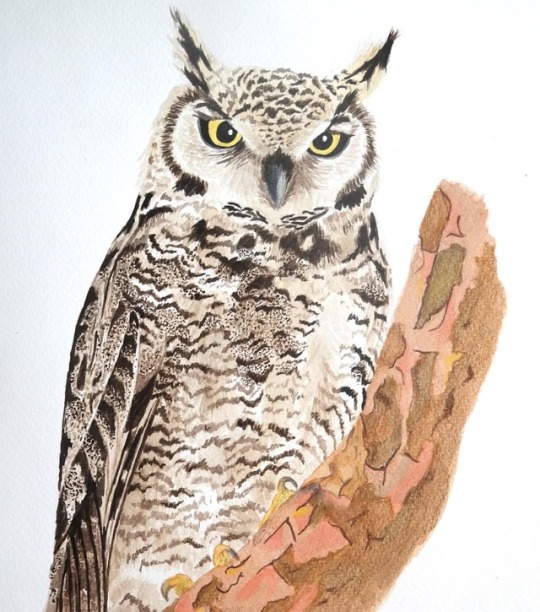
Tucúquere (Bubo virginianus magellanicus) #illustration #ilustracion #watercolor #polychromos #acuarela #lapices #dibujo #pintura #paint #chile #canson #kuretake #акварель #水彩画 #水彩畫 #Aquarell #acquerello #aquarelle #수채화 물감 #aves #bird #vogel #draw #илустрација #aveschile #aveschilenas #avesdechile #faunachilena (en Santiago Metropolitan Region)
#illustration#수채화#avesdechile#aveschilenas#lapices#bird#pintura#dibujo#aquarelle#aveschile#draw#canson#水彩畫#илустрација#chile#ilustracion#polychromos#акварель#acuarela#kuretake#水彩画#vogel#watercolor#paint#aquarell#acquerello#faunachilena#aves
0 notes
Photo
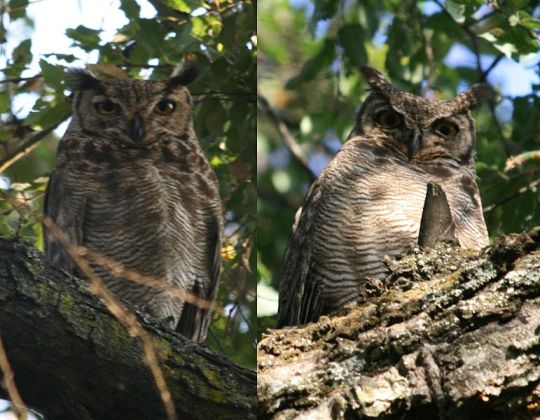
Lesser Horned Owl (Bubo magellanicus)
Also known as the Magellanic horned owl, the lesser horned owl is a large species of owl which occurs in southern South America, extending north to the Andes. The lesser horned owl has traditionally been classified as a subspecies of the closely related great horned owl (B. virginianus) but has since been elevated to full species status. Like their northern relatives, lesser horned owls occupy a range of habitats including forests, scrubland, grassland and farmland. In typical owl fashion lesser horned owls are nocturnal hunters, feeding on a range of rodents and other small animals.
Classification
Animalia-Chordata-Aves-Strigiformes-Strigidae-Bubo-B. magellanicus
Image: Diucon
#Lesser Horned Owl#Bubo magellanicus#Owl#Strigiformes#Strigidae#Chordata#Aves#Bubo#Horned Owl#South America#Birds
85 notes
·
View notes
Note
mr utterson from strange case of dr jekyll and mr hyde plsplsplslpslpss(nicely)

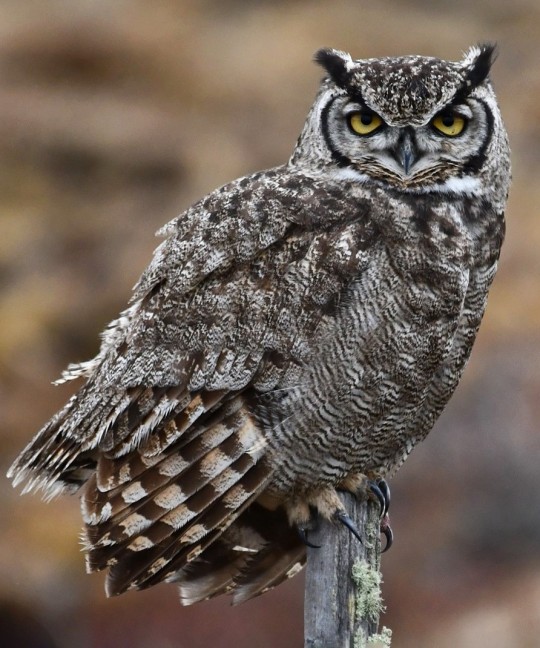
Mr Gabriel Utterson from the book Strange Case of Dr Jekyll and Mr Hyde is a Lesser Horned Owl (Bubo magellanicus).
15 notes
·
View notes
Photo

Vintage Mid Century 1960s 60s Wood Wooden Embossed OWL Wall Hanging Plaque
Vintage
Lovely condition
Believe its a Horned Owl
Newer, replacement, wire and nails on the backside for easy hanging.
Very thin / 2 dimensional (its less than a quarter inch thick)
I package well and ship out daily!
Horned owl
62 languages
Article
Talk
Read
Edit
View history
Tools
From Wikipedia, the free encyclopedia
"Eagle owl" redirects here. For other uses, see Eagle owl (disambiguation).
Horned owls and eagle-owls
Temporal range: Late Pliocene to present
Indian eagle-owl, Bubo bengalensisScientific classificationDomain:EukaryotaKingdom:AnimaliaPhylum:ChordataClass:AvesOrder:StrigiformesFamily:StrigidaeGenus:Bubo Duméril, 1805Type speciesStrix bubo
Linnaeus, 1758
Species
See text
Synonyms
Huhua
Nyctea Stephens, 1826
Ophthalmomegas Dejaut, 1911[1]
and see text
The American (North and South America) horned owls and the Old World eagle-owls make up the genus Bubo, at least as traditionally described. The genus name Bubo is Latin for owl.
This genus contains ten species that are found in many parts of the world. Some of the largest living Strigiformes are in Bubo. Traditionally, only owls with ear-tufts were included in this genus, but that is no longer the case.
Eurasian eagle-owl with a rat in its beak
Taxonomy[edit]
Detail of an eye of an eagle-owl
The genus Bubo was introduced in 1805 by the French zoologist André Duméril for the horned owls.[2] The type species is the Eurasian eagle-owl.[3] The word bubo is Latin for the Eurasian eagle owl and was used as the specific epithet for the species by Carl Linnaeus in 1758.[4]
A molecular phylogenetic study published in 2020 found that species in the genera Scotopelia and Ketupa were embedded within the clade containing members of the genus Bubo making the genus Bubo paraphyletic. To create monophyletic genera nine species were moved from Bubo to Ketupa.[5][6]
Species[edit]
The genus contains 10 extant species:[6]
Snowy owl, Bubo scandiacus
Great horned owl, Bubo virginianus
Lesser horned owl, Bubo magellanicus
Eurasian eagle-owl, Bubo bubo
Indian eagle-owl, Bubo bengalensis
Pharaoh eagle-owl, Bubo ascalaphus
Cape eagle-owl, Bubo capensis
Arabian eagle-owl, Bubo milesi
Greyish eagle-owl, Bubo cinerascens
Spotted eagle-owl, Bubo africanus
Eurasian eagle-owl (Bubo bubo)
Sometimes included in this genus:
Verreaux's Eagle-owl, Ketupa lactea
Spot-bellied Eagle-owl, Ketupa nipalensis
Barred Eagle-owl,Ketupa sumatrana
Fraser's Eagle-owl,Ketupa poensis
Akun eagle-owl, Ketupa leucosticta
Philippine eagle-owl, Ketupa philippensis
Dusky eagle-owl, Ketupa coromanda
Shelley's eagle-owl, Ketupa shelleyi
Blakiston's fish owl, Ketupa blakistoni
Brown fish owl, Ketupa zeylonensis
Tawny fish owl, Ketupa flavipes
Buffy fish owl, Ketupa ketupu
Pel's fishing owl, Scotopelia peli
Rufous fishing owl, Scotopelia ussheri
Vermiculated fishing owl, Scotopelia bouvieri
Fossil record[edit]
Named and distinct Bubo species are:
Bubo florianae (Late Miocene[verification needed] of Csákvár, Hungary, tentatively placed here)
Bubo leakeyae (Early Pleistocene of Tanzania)
Bubo binagadensis (Late Pleistocene of Binagady, Azerbaijan)
Bubo osvaldoi (Pleistocene of Cuba)[7]
Bubo insularis (Pleistocene of Sardinia)
Some notable undescribed fossils of prehistoric horned owls, usually quite fragmentary remains, have also been recorded:
Bubo sp. (Late Pliocene of Senèze, France)[8]
Bubo sp. (Late Pliocene of Rębielice Królewskie, Poland; tentatively placed here)[9]
Bubo sp. (Late Pleistocene of San Josecito Cavern, Mexico)[10]
Specimen UMMP V31030, a Late Pliocene coracoid from the Rexroad Formation of Kansas (US), cannot be conclusively assigned to either Bubo or Strix. This fossil is from a taxon similar in size to the great horned owl (B. virginianus) or the great grey owl (S. nebulosa).[11]
The Sinclair owl (Bubo sinclairi) from Late Pleistocene California may have been a paleosubspecies of the great horned owl,[12] while the roughly contemporary Bubo insularis of the central and eastern Mediterranean has been considered a junior synonym of a brown fish owl paleosubspecies.[13] Additional paleosubspecies are discussed on the appropriate species page.
Several presumed Bubo fossils have turned out to be from different birds. The Late Eocene/Early Oligocene eared owls "Bubo" incertus and "Bubo" arvernensis are now placed in the fossil barn-owl genera Nocturnavis and Necrobyas, respectively. "Bubo" leptosteus is now recognized as primitive owl in the genus Minerva (formerly Protostrix). "Bubo" poirreiri from the Late Oligocene or Early Miocene of Saint-Gérard-le-Puy in France, is now placed in Mioglaux.
On the other hand, the supposed fossil heron "Ardea" lignitum from the Late Pliocene of Plaue-Rippersroda (Germany) was apparently an owl and close to Bubo or more probably actually belongs here. Given its age – about 2 million years ago or so – it is usually included in the Eurasian eagle-owl today.[14]
Interactions with humans[edit]
Because of their nocturnal habits, most owls do not directly interact with humans. However, in 2015, an eagle owl in Purmerend, Netherlands, attacked some fifty people before it was caught by a hired falconer.[15]
0 notes
Photo
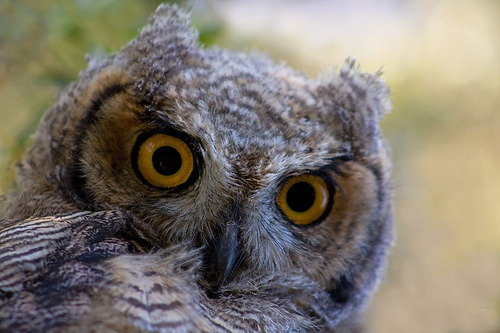
Retrato de un Tucúquere by ik_kil on Flickr.
#Tucúquere#Magellanic Horned Owl#Bubo magellanicus#Aves de Chile#Birds#Cuesta Lo Prado#Región Metropolitana#Chile#Retrato#un
15 notes
·
View notes
Photo
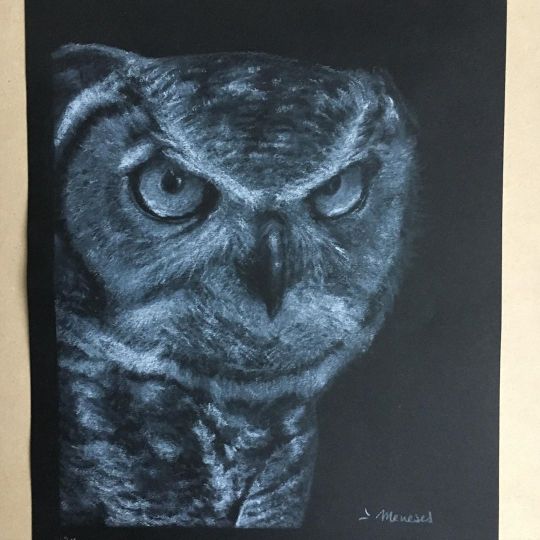
Tucúquere or Magellanic Horned Owl (Bubo Magellanicus) in white charcoal. He’s judging you. And he’s not happy. #illustration #art #drawing #whitecharcoal #generalspencils #blackpaper #noirpaper #Chile #Avesdechile #Chileanbirds #ave #bird #dibujo #ilustracion #tucuquere #owl #buho (en Valdivia, Chile) https://www.instagram.com/p/CDEaRfxpVFw/?igshid=1e8m9i9zgadic
#illustration#art#drawing#whitecharcoal#generalspencils#blackpaper#noirpaper#chile#avesdechile#chileanbirds#ave#bird#dibujo#ilustracion#tucuquere#owl#buho
0 notes
